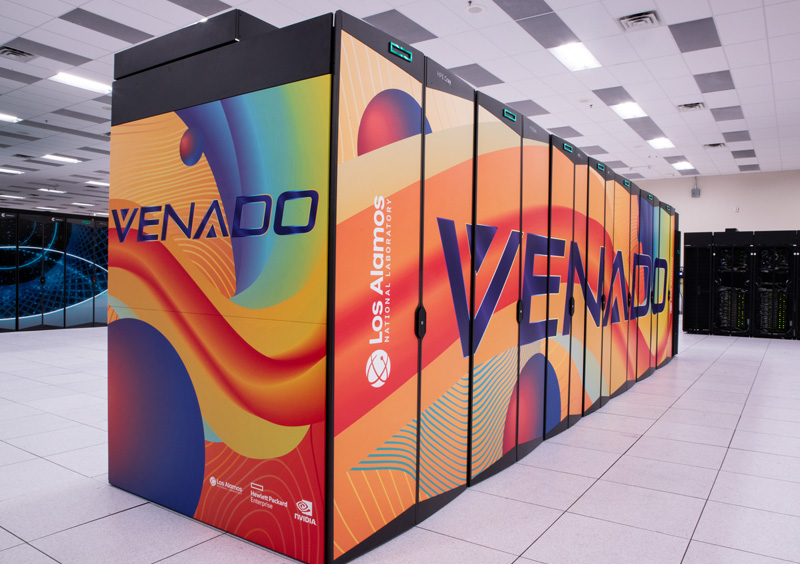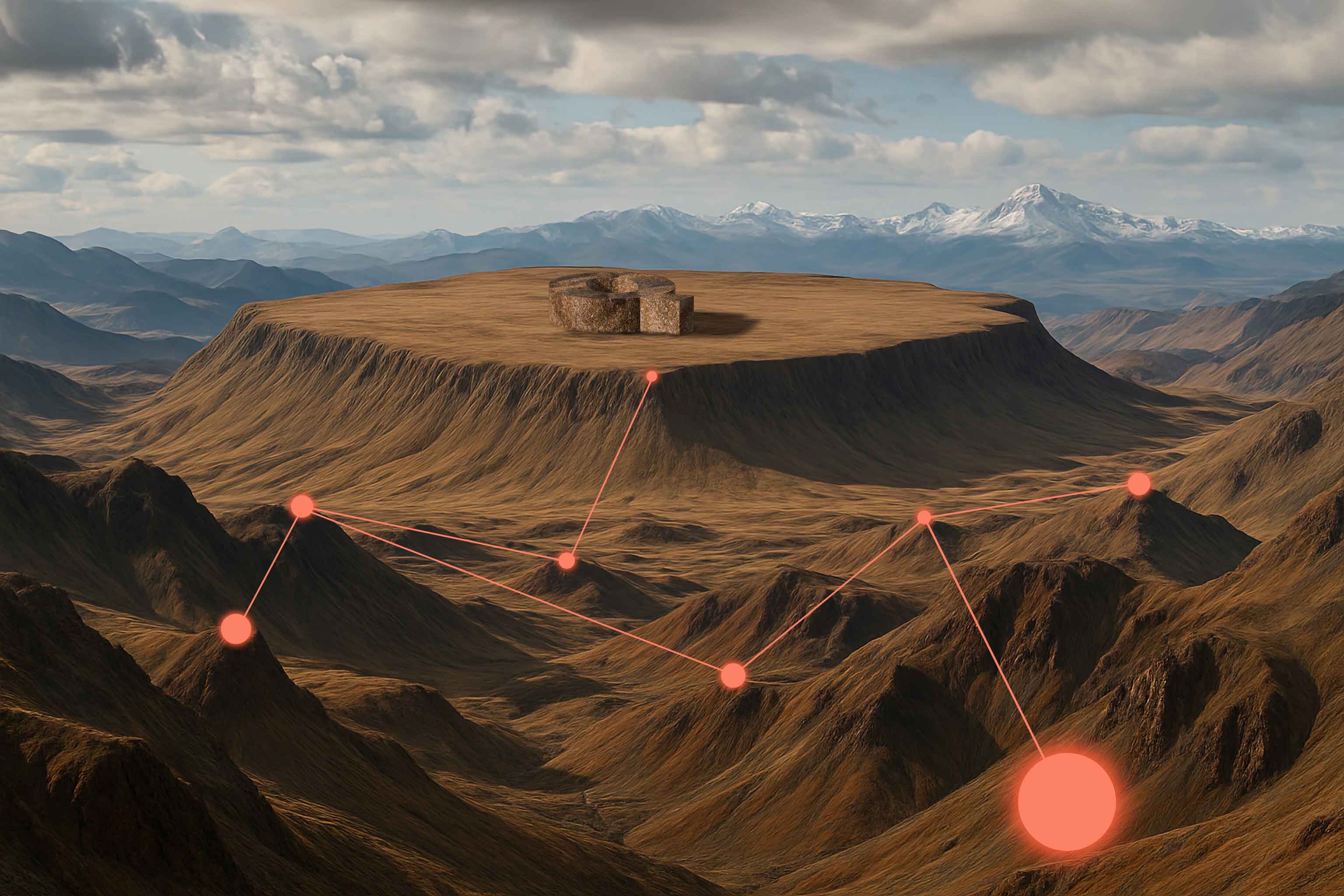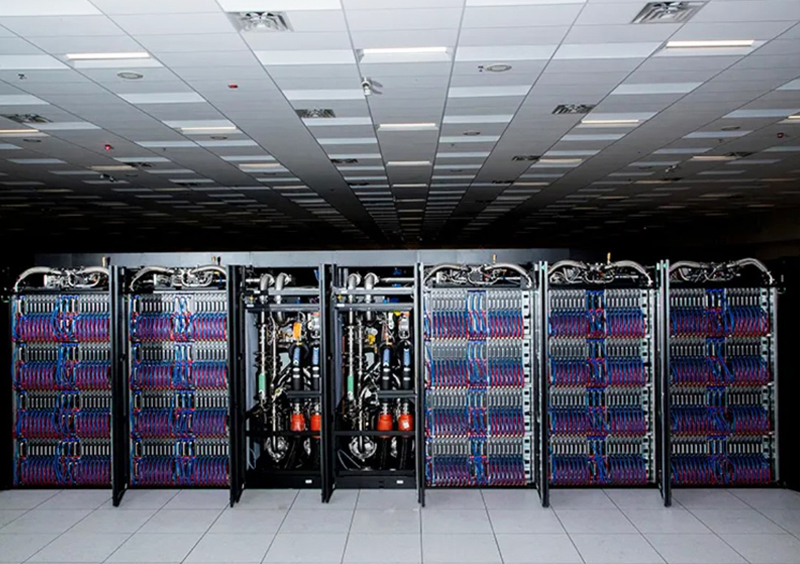In the year following its April 2024 ribbon cutting, Venado — the Lab's newest, AI capable supercomputer — racked up an impressive collection of success stories. This four-part series reviews some of the supercomputer's successful applications to high-priority, data-intensive science.
Now, Venado's powerful processing and artificial intelligence capabilities will address the most pressing national security threats as it moves to a classified network.
"The plan for Venado has always been to move it to the secure network," said Mark Chadwick, associate Laboratory director for Simulation, Computation and Theory. "This move happened quickly because of the incredible pace of innovation in AI. These computational and scientific advances for our broad missions will be pursued with our collaborative partners at other national Labs, industry and academia."
Part four: How AI prediction is improving energy grid resiliency
Energy infrastructure is comparable to a living system — complex, ever-changing and interconnected — which makes it a huge challenge for scientists to develop suitable models for prediction.
"Energy grids are like giant, constantly moving puzzles. They have to deliver electricity from where it's made, like power plants or solar panels, to where it's used in homes, businesses and factories — all in real time," said Los Alamos Researcher Divya Banesh. "And if one piece of that puzzle shifts — like a sudden surge in demand, a broken power line, a nefarious attack or a cloudy day that blocks solar panels — the whole system must adjust instantly to avoid disruption in service or performance. It's all connected, and small changes can ripple across the grid."
To better understand the impact of, and thus more effectively respond to, unforeseen events such as power interruptions due to extreme weather and cyberattacks, Banesh and a team of Los Alamos scientists are developing a foundation model that can predict the behavior of energy grids. Their research integrates 60 terabytes of energy grid data and fine tunes a time-series forecasting model developed by Amazon called Chronos T5. This analysis of time, location and supply fluctuations — along with multiple physics problems — results in improved predictions that scientists anticipate will lead to energy infrastructure that is safer, more resilient, high performing and less costly.
Laying the groundwork by fine-tuning predictions
According to Banesh, using tools such as Venado and Chronos to train and fine-tune neural network models is crucial to getting them closer to a foundation model for the project.
"Being able to work with top computers in the world like Venado to solve cutting-edge problems is exciting and possible only at a place like the Lab. Venado has proved a vital resource to iteratively train the models, and it has helped us examine results quickly," she said. "These models range from approximately 200 million to 700 million parameters, and we are processing power grid data from multiple years supplied by an industry partner."
Chronos T5 is a time-series forecasting model — which means it tracks how something changes over time — useful for weather, stock market and retail sales analysis. It is also a tool for "zero-shot" forecasting, or strong performance on datasets it was not explicitly trained on. With Venado's powerful computing capabilities and detailed electric grid data, Banesh and the team were able to predict when the frequency would drift from the 60Hz "sweet spot" (the optimal operating point of the grid) signaling potential disruptions. They did this by using Chronos to create a zero-shot prediction and then fine-tuned it to create a forecast that better matched the historical data.

Powering up the grid to tackle complex variables
Imagine the sheer computing power it takes to crunch data with variation in terrain and elevation, and with disparity in where grid nodes sit. Then layer in time-based factors such as seasonal shifts, energy surges and when sources of renewable energy are available. Finally, add countless other variables, all working together in hidden patterns that require smarter predictions. Because this process involves many interacting parts — from generating stations to transmission lines and from substations to end users — predicting energy grid behavior in a meaningful way benefits vastly from large, complex neural networks. As these enormous machine learning models get larger and more complex, they demand even more massive computing resources.
Next steps for the research team involve exploring anomaly or change detection to see if they can identify alterations to the "normal." This involves developing a good model that can analyze what "normal" means, even with small changes within the frequency band over large amounts of data.
"We also plan to incorporate spatial details to understand the impact of interruptions in one location to another," Banesh added. "We are already working on Chicoma and looking forward to incorporating time series and spatial information to a model that can understand and predict on both fronts. This is cutting-edge work for power grid data, and we’re excited to see how we far can push the research."
About the team
Divya Banesh is a scientist using AI models to better forecast disruptions to energy grid systems. Other members of the team include Los Alamos researchers Russell Bent, Ayan Biswas, Michael McCann, Manuel Garcia, Earl Lawrence and Diane Oyen.
LA-UR-25-23993






